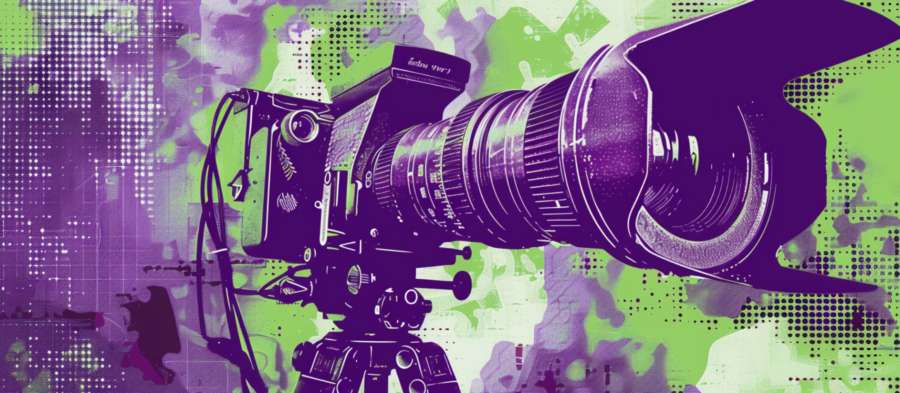Reading the Room: The Subtle Science of Observation
Before even pressing record, a videographer must master the art of observation. Imagine being a detective, but instead of solving crimes, you’re uncovering emotions and intentions. It’s about noticing the slight twitch of an eyebrow, the hesitant shuffle of feet, or the way someone’s eyes dart to the side. These small, often overlooked details are the building blocks of a rich visual narrative.Videographers need to be part psychologist, part artist, and part ninja. They blend into the background, allowing their subjects to reveal their true selves without the intrusion of a lens. It’s a delicate dance of anticipation and reaction, where every movement counts.
Lighting the Mood: The Emotional Palette
Lighting is to videography what spices are to cooking. It sets the mood, creates depth, and can even influence how we perceive a subject’s emotions. A well-lit scene can turn a simple gesture into a profound statement. Cinematic lighting techniques, like chiaroscuro, use light and shadow to highlight the contours of a face, adding a dramatic flair that can emphasize a character’s inner turmoil or joy.The trick is to use lighting not just to illuminate but to accentuate the nonverbal cues. For instance, a soft, diffused light can convey warmth and intimacy, making a tender glance feel even more heartfelt. Conversely, harsh, stark lighting can create tension, turning a slight frown into a portent of conflict.
Framing the Narrative: The Power of Composition
Just as a painter carefully considers each brushstroke, a videographer meticulously frames each shot to tell a story. Composition is about guiding the viewer’s eye to the most important elements, using techniques like the rule of thirds or leading lines. But beyond these technicalities, it’s about creating a visual hierarchy that reflects the emotional weight of a scene.Take, for example, a close-up shot of someone clenching their fists. The tight framing isolates this action, making it the focal point and imbuing it with significance. It’s a silent scream, a nonverbal exclamation mark that speaks volumes without uttering a word.
The Dance of Movement: Kinetics in Videography
Movement is another crucial aspect of nonverbal communication, and videographers capture this with a blend of steadiness and fluidity. A handheld camera can convey urgency and chaos, while a smooth dolly shot can evoke a sense of calm and control. It’s about matching the camera’s movements to the emotions being expressed, creating a seamless dance that draws viewers into the story.Consider a scene where two characters are having an intense conversation. A slow, creeping zoom can build suspense, mirroring the rising tension between them. Alternatively, a sudden cut to a wide shot can release that tension, providing a moment of relief or a new perspective.
Capturing the Unsaid: The Magic of Editing
Editing is where the magic truly happens. It’s the stage where the silent storytellers weave together the various elements of nonverbal communication into a cohesive narrative. By carefully selecting and juxtaposing shots, editors can control the rhythm and pacing of a story, amplifying the impact of body language and expressions.Imagine editing as a form of musical composition. Each cut is a note, each transition a chord, and together they create a symphony that resonates with the viewer. A lingering shot on a wistful smile can evoke a sense of nostalgia, while a quick succession of glances can build suspense and anticipation.
Sounding Silence: The Role of Sound Design
While our focus is on the visual, we can’t ignore the power of sound design in enhancing nonverbal communication. The subtle hum of a room, the rustle of clothing, or the faintest sigh can all amplify the visual cues captured by the camera. Sound design bridges the gap between what we see and what we feel, adding another layer to the silent narrative.Imagine a scene where two characters sit in a tense silence. The ticking of a clock in the background can heighten the sense of anxiety, each tick acting like a heartbeat counting down to a crucial moment. The absence of sound, too, can be just as powerful, drawing attention to the smallest gestures and expressions.
Emotional Resonance: Connecting with the Audience
Ultimately, the goal of capturing nonverbal communication is to forge an emotional connection with the audience. It’s about making viewers feel something profound without the crutch of dialogue. This requires a deep understanding of human emotions and the ability to translate them into visual and auditory elements.A seasoned videographer knows that a story is as much about what is left unsaid as it is about the spoken word. By focusing on the subtleties of body language and expressions, they can create moments that resonate on a deeply personal level. A single tear rolling down a cheek can convey more than a thousand words ever could.
Wrapping Up: The Silent Mastery of Videography
Videographers are the unsung heroes of storytelling, weaving together a rich tapestry (without ever calling it that) of nonverbal communication. They capture the silent dance of emotions, transforming ordinary moments into extraordinary narratives. Through the artful use of observation, lighting, composition, movement, editing, and sound design, they create stories that speak directly to the heart.So next time you watch a film or a video, take a moment to appreciate the silent storytellers behind the lens. They’re the ones who understand that sometimes, the loudest stories are told in whispers and the most profound messages are conveyed without a single word.
Article kindly provided by medialook.tv

